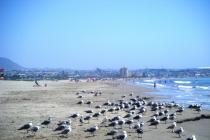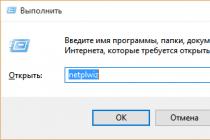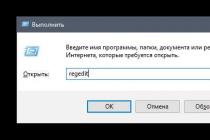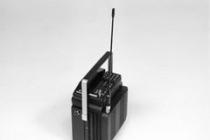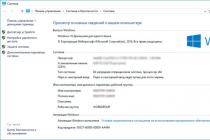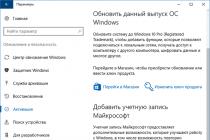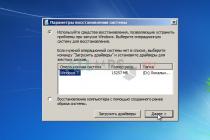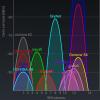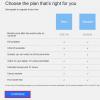The reason for writing this article was Google's recommendations on site optimization in order to increase revenue in the Google Adsense advertising network. The essence of the recommendations was to speed up the loading of the site by reducing the size of the images used on the site. I was especially intrigued by the phrase "if you compress without loss."
And then I discovered America for myself, having learned that images can be compressed without loss of quality. But looking ahead, I will say that lossless compression is not always significant. However, it is not a sin to reduce what really slows down the loading of the site.
Why optimize images for your website
Reducing the size of site pages was very important in the era of dial-up. But why do this now, when everyone is sitting on a dedicated line? It would seem the opposite. Put all the beauty on the page. The visitor will probably have enough speed.
But the trends of recent years indicate that people are massively transplanted to mobile devices, that is, tablets and smartphones. The main access to the Internet is cellular networks second and third generation (2g, 3g). And since no Russian city can boast of 100% high-speed mobile Internet coverage, users have to be content with speeds only slightly higher than Dial-Up. And the issue of page size optimization is again becoming relevant.
And as you know, images make the main contribution to page size.
Selecting the Appropriate Image Format
First you need to decide on the image formats. Sometimes, just replacing PNG with JPEG will significantly reduce the file size. Here are some general guidelines for choosing an image file format for your site.
- PNG is almost always superior to GIF (that is, PNG has a smaller size and better quality), although some users may still have older versions of browsers that do not fully support PNG.
- Use GIF for very small images with simple graphics (for example, less than 10x10 pixels, or for a color palette of less than 3 colors) and for images that contain animation.
- Use JPG for all images as photos.
- Don't use BMP and TIFF.
How to compress images for a website
There are two solutions. Software for working with images installed on a computer and online services.
The choice of software is based on preferences and operating system. Windows users should pay attention to, and Linux lovers on the GIMP.
Image compression programs
Browsing the network brought me to an article on Habré. In which all the subtleties of image compression are described. After reading which, my choice fell on Image Catalyst.
Image Catalyst is a collection of programs for complex optimization / compression of PNG and JPEG images without loss of quality within the same format. It makes sense to use it to speed up the loading of graphic elements (in particular, sprites) of web pages.
You can download Image Catalyst 2.0 from here (windows only).
I will not write how to use this set of applications for optimizing graphics, because everything is detailed on Habré, and it is a sin to steal the context and pass it off as your own.
Online image compression service
I have a feeling that soon only servers and tablets will be released, and personal computers will die out as a class. At the same time, all kinds of web applications will be located on the servers, and with the help of tablets we will manage them. Such is the new generation of the client-server network model.
To optimize images without personal computer you can use the free service punypng.com
Here is a real example of the work of the service to optimize the images of this page. As you can see, there are only a few percent on JPG, but PNG won almost a quarter. original size... So it's worth using this service, especially since it's free. 
However, a free account has several limitations:
- Maximum 15 files in bulk upload
- Maximum processed file size 150 kilobytes
- Normal compression only
- Missing PNG lossy optimization
But even such opportunities are quite enough for optimizing images for a website.
The main thing is to specify the image on your computer or phone, specify the quality from 1 to 100, click the OK button at the bottom of the page. The rest of the settings are set by default. How more indicated " quality"In the settings (80-100), themes bigger size file. And vice versa, lower quality(50-75) will give smaller size JPEG file. If necessary, you can find out the level of quality (compression) with which the jpeg file was created.
If after compression the size of the jpeg file becomes, on the contrary, larger than the original, then you need to lower the quality level from 80 to a lower number, for example, set 60. Sizes in pixels and megabytes before and after compression can be seen after processing or clicking OK. If, at a quality level of 40-50, the size is still larger than the original, then there is no point in compressing the picture - it was already well compressed. You can only try to remove the metadata embedded in the jpg file or remove exif + make the jpg progressive without loss of quality.
In the settings, you can select the type of subsampling (decimation), which allows you to achieve greater compression jpg file with minimal losses. Subsampling 1x1 gives the best image quality, bright color transitions are preserved, mostly suitable for high-quality previews or small preview pictures. 2x1 subsampling is the most common method, is used in almost all digital cameras, compression of sharp color transitions occurs horizontally, allows you to achieve a smaller file size without much loss, great for large images. 1x2- the same as 2x1, but the averaging of sharp color transitions will be vertical. Subsampling 2x2 averages sharp color transitions horizontally and vertically, allows you to achieve the smallest file size, suitable for blurry pictures.
The original image does not change in any way. You will be provided with another processed image in jpg format.
The photos of "Red Pepper After the Rain" show the JPEG quality level for comparison: 







The sizes of this jpg image depending on the quality level (Q - quality, KB - this is the size in kilobytes):
Q 10 = 2 KB; Q 15 = 2.7 KB; Q 30 = 4.3 KB; Q 50 = 5.9 KB; Q 60 = 6.7 KB; Q 70 = 7.9 KB; Q 80 = 9.8 KB; Q 90 = 14.1 KB; Q 100 = 46.5 KB.
From the above examples, we can conclude that the best size-quality ratio can be a quality level from 75 to 95. And in order for the picture to occupy the smallest size and at the same time be more or less normal, quality 60-70 is suitable. If quality does not matter, but you need a small file size, then a quality percentage from 30 to 50 will do.
Please note that the file size of a progressive JPEG image is usually 2-3% smaller than the standard one with the same image quality, and it will also open beautifully when it is loaded in an Internet browser, as is usually done in films! An example of standard and progressive JPEG images can be viewed.
It's no secret for everyone that page loading speed is one of the key success factors. This is important not so much for raising search rankings as for the convenience of users, especially those who use mobile devices.
Therefore, no matter who creates the graphics for your site, you need to be sure that they are losslessly optimized for web resources to reduce site load times. Indeed, if you count more on mobile traffic, you need to get the right approach to the graphic component - not many photos, and compress what you need as best as possible.
I offer you several free image compression services.

This is a multifunctional service! It will not only allow you to compress the image with ease, but also additional functions: crop images, add borders, adjust brightness levels, contrast and saturation, monochrome effect, and much more. There is nothing to install - just upload the image, compress it and edit it to your liking.

It is a free optimizer with a simple and intuitive interface. As in the previous case, you just need to load the image and select the desired compression level without loss of quality in the drop-down menu. Compression options range from aggressive to light compression.

This program is also free and, like the previous one, has an easy-to-use interface. Pung PNG works with PNG, JPEG, and GIF formats and compresses them without losing quality (as they claim). Our tests confirm that this service delivers amazing results. Try it yourself.

Click on the "Try it now" button and on the next page upload your photo using the "Upload your foto" button.
There are no settings in this program. Immediately after loading, the program itself changes the photo. Below the photo you can see the original photo size, the resized photo and how many times the compression was done. The program itself sets how many times the photo will be compressed. Photo can only be saved in JPEG format. As you can see, the program is not very functional and in most cases it is not suitable for compressing photos without losing quality online.

An excellent program to compress photos without losing quality online, quite functional. The program is completely in Russian and you will figure it out yourself. The program does an excellent job of compressing photos without losing quality online.
A simple and straightforward program in which you can compress photos without losing quality online. All that is needed here is to upload a photo and set the desired size in width or height.
People upload photos to social media pages, to their websites, open topics on forums, send them to friends and family via e-mail, etc. Photos taken with modern cameras take up a lot of space on various storage media.
Often the question arises before users: “ how to compress a photo?", Because the" large weight "of the image causes the following inconveniences:
- Traffic problem - there are countries and cities in the world that can only be used wireless internet, accordingly, it is charged by the number of uploaded bytes, so the photos must be compressed so that a person can download them if necessary, and not spend all the traffic on one image;
- Speed of loading web pages - even those users who are connected to high-speed Internet will have problems loading "heavy" photos, that is, the entire page will be loaded, and the picture will be reloaded for some time. You also need to remember about loading the page on devices that use Mobile Internet, the speed of which is low, and too heavy photographs slow down this process even more;
- Size restrictions - social networks and various sites put restrictions on the size of the uploaded photos - this is necessary for their normal functioning;
- Original size - photos that take up a lot of space on media are actually several times larger than the size in which they are displayed on the screen, which causes various incidents with downloading to / from the Internet.
To avoid such problems, you need to compress photos for the Internet. For personal use, that is, viewing on your PC or laptop, this is optional.
Compress photos online
Compress photo online is the easiest and most quick way solutions to the problem that the image is too heavy. To do this, you need to go to an online service that focuses on compressing photos: basically, this is reducing the size of images by decreasing the expansion.
Below are some free online services of this kind:
- Image Optimizer - this service provides the ability to compress, optimize and resize images. The service interface is easy to use: to get started, you need to upload a snapshot from your device, select the size and optimization option. You can also install this optimizer on your computer:
- Web Resizer - using this online service, you can edit a photo: compress, crop, add borders, change brightness, contrast, saturation and some other parameters:
- PunyPNG - also free program, which works with various image formats and is effective in reducing the weight of the images:
Photo compression software
« How do I compress the size of a photo?"- such a question often appears before novice photographers, and not only before them.
The biggest mistake is trying to reduce a photo without changing the image size, but sacrificing image quality. The result of such actions is a blurry image that does not fit on the screen. To get a good picture with a small weight, you can use the simplest graphics editor called Paint:
Reducing the size of an image in paint is easy if you follow these steps:
- Open an image with Paint;
- Click on the "Resize" button, after which a window will open:
- In the "change" field, activate "percent", check the " keep proportions", We prescribe a number that determines how many percent will be in the reduced image from the original. In our case, this is 80%. After clicking on "Ok" you can see the result:
- Save the result by clicking on "File", "Save As". Next, you need to select the extension and enter the name. Carrying out this procedure gave a reduction in size by half of the original.
You can also reduce the weight of the photo in a professional graphics editor Photoshop:
To reduce weight you need:
- Open a photo in Photoshop;
- Activate the function " Save for web and devices» ( Save for Web & Devices) found in the File menu:
- In the window that opens, set the settings: format and quality. Reduce quality ( quality) more than 50% is not recommended. At the bottom of the window there are width and height settings, with which you can also reduce the size:
- All that remains is to save the resulting image. Below is the result of the performed manipulations:
How to compress photos for sending by e-mail or just for posting on the Internet? As mentioned above, it is necessary to reduce the weight of the images before submitting. When performing compression, it is advisable to adhere to the following rules:
- The weight of the image should not exceed 100 KB, and the size should be 800 by 600 pixels - this is due to the fact that there are still monitors that do not get along well with giant pictures;
- As you reduce the weight of a photo, traces may appear on it, which indicate that it has been compressed. To hide this, you need to blur the photo a little, using the Blur tool in Photoshop, setting a value of 0.1 - this will be enough;
- Best of all, save images in JPEG format.
Compressing a lot
How to compress multiple photos at once? It is often necessary to send a large number of photos to someone or simply post them on a website. Naturally, first the weight of the photo must be optimized. This can be done both online and using programs installed on a PC or laptop.
How to compress many photos at once online? To solve this problem, there are specialized services such as Kraken.io. At a time, this service allows you to process a large number of photos, but their total weight cannot exceed 10 megabytes.
For better photo processing, it is better to use applications that are installed on your computer. An example of such a program is Picture Combine - this graphics editor allows for batch optimization of photos. The program is easy to use, so everyone can master it:
How to compress multiple photos in Photoshop
Photoshop also has the ability to compress multiple photos at the same time. To do this, you need to create an action - an algorithm of actions for batch processing of photos.
Below are the steps to create such an algorithm:
- Create two folders. First, save the images that need to be reduced. In the second, already processed photos will be saved;
- Then you can start recording the algorithm for processing photos. In the Window menu ( Window) you need to click on the item " Creating a new operation» ( Create new action), enter a name for the new action and click on "OK";
- Recording of actions will start after clicking on the "Start recording" button ( Degin recording);
- To reduce the photo, you need to open the file from the folder in which the images for processing are stored (File -> Open) (File -> open). In the Image menu ( Image) select " Image size» ( image size ) - the window for expanding and size settings will open. After making changes, you need to click on "OK". You can now save the thumbnail image to an empty folder using the Save As command ( Save as);
- Next, you need to stop recording the algorithm by clicking on " Stop recording» ( Stop recording);
- For automated processing the rest of the photos in the File menu, you need to select "Automation" ( Automate). Within this menu, use the function " Batch processing» ( Batch);
- To process the entire folder at once, it is necessary in the "Source" menu ( Source) select "Folder" ( Folder), then click on "Select" ( choose) and specify the folder with photos. You also need to determine where the processed photos should be sent, for this in the "Location" ( Destination) select "Folder" ( Folder) and using "Select" ( choose) specify the created empty folder. To fully automate the process, you must activate the item " Overwrite, Save command as» ( Override action “Save As” commands), otherwise it will be necessary to approve the saving path for each individual photo. To start processing, click "OK".
Compressing the whole folder
How to compress a folder with photos? Such a question usually arises when it is necessary to save photos on a medium with a small capacity, for example, on a flash drive. Or when you need to send a large number of photos by email.
(Last update: 05.06.2019)
Greetings, dear reader! Search engines, and we, too, want to solve the problem of too long loading a web page. Webmasters, most often, compress images using special programs and services. I present to your attention 5 programs and 6 online tools to optimize / compress your images to improve your WordPress SEO... Choose according to your taste. And, among other things, there is plenty to choose from.
How to optimize images for a website
Ladies and gentlemen, are you completely sure that the images you are using in this article are fully optimized for the web? However, the harsh reality is that no matter how carefully you design your images, the regular ones you use won't be able to preserve them as effectively as possible. ready files... And when images are compressed, their quality can deteriorate significantly.
If you are a blogger or webmaster, what about your visitors? If your images are not optimized, their loading time will be very long and readers will just close the page of the site. And saving space on hosting, on hard disk and if you store photos in cloud storage? You can save a lot of space, a whole bunch of megabits, if you use one of the tools for maximum image compression.
Perfectly to compress images you need to use special programs or web services, which will be discussed in this post. Check out the good OptiPic image compression service to get started. Please pay attention to it.
OptiPic - automatic compression of images without loss of quality
OptiPic Image Compression Service
You can automate the reduction / compression of images using the OpticPic service:
Simple connection of OptiPic to the site - takes literally 2 minutes;
- The service works on full autopilot - the appearance of new (not yet compressed) images is constantly monitored;
- Working with OptiPic is safe - an initial copy is automatically created before optimizing each image;
- There is a function to reduce the size of images (resize);
- There is affiliate program, by which you can earn up to 40% of attracted clients;
- The service supports any sites in php (any CMS, framework or even a self-written site).
You can connect the service to the site for automatic image compression at OptiPic.io. After connecting to the service, the reduction of pictures will take place in automatic mode... The module will find available images and optimize their size without losing quality. The image compression plugin works with most popular image formats. Video instructions for installing and configuring the module - https://www.youtube.com/watch?v=Qz6pJDfsKX8.
So, best free programs to compress images without quality loss... These are mainly image compression tools for Windows, as they are the most widespread and popular.
Programs for compressing images / pictures for the site
Images are the ones that take up a lot of space on the page and weigh the most. By optimizing images, you can dramatically improve the loading speed of your website pages.
Compressing images is the application of data compression algorithms to images stored digitally. Compression reduces the size of the image, which reduces the time it takes to transfer the image over the network and conserves storage space.
Image compression is classified into lossy compression and lossless compression. Lossless compression is often preferred for artificially constructed images such as graphics, program icons, or for special cases, for example, if images are intended for post-processing by image recognition algorithms.
Lossy compression algorithms as the compression ratio increases, as a rule, they generate artifacts that are clearly visible to the human eye.
Cesium - Free Lossless Image Compression Software
Cesium - image optimization
Cesium is a simple open source tool for compressing PNG, JPG and BMP... This is a fairly easy-to-use program. Supports Russian, and it is also possible to use the program in Portable version, that is, do not install it on your computer, but open it directly from the folder.
To compress images, click the File - Add button, select the images, select the folder where the processed images will be loaded - Output, select the compression option: "Quality" and click the "Compress" button, and in a second you will get the finished result. Official site address - http://caesium.sourceforge.net/
Free FILEminimizer Pictures Image Compression Software
FILEminimizer Pictures- Free Image Compression Software
FILEminimizer Pictures takes a more radical approach to image compression than most of its competitors. By default, when trying to compress your photos, it can change the format and size of the image, down-encode JPEG files, and strip metadata. Most of these options can be set in the program settings.
In use, the program adheres to the generally accepted principle. After you have indicated the source file to it, selected the folder for the result obtained, perhaps configured one or two options, just one click of the mouse is enough to start the optimization. All of this is done pretty quickly, so you don't have to wait too long.
How well does the compression perform? Everything varies depending on the format, at least in the tests that were produced. PNG compression - nothing special - 26.8% (some tools do better without loss of quality), GIF compression was above average - 16.5%, but our JPG web graphics decreased in size by 39.3% - the largest compression in the study group. But in all tests, the loss of quality was visually slightly noticeable. The official site where you can download the program for free - http://www.balesio.com/fileminimizerpictures/eng/index.php Let's go further.
FileOptimizer - program for compressing JPG, GIF and PNG images
The capabilities of the FileOptimizer program are quite large. She can not only squeeze jpg images, GIF and PNG, but can also work with executables, archives, Microsoft documents Office, PDF files, - the list can be continued long enough.
Surprisingly, it is absolutely not difficult to use it. In fact, the program has one of the simplest interfaces: drag and drop images into FileOptimizer, right-click, select Optimize and enjoy the result. However, this simplicity has a downside - the original files are replaced by the program. The originals are sent to the trash, so you will have to restore them, of course, if you need them.
But compression is of course paramount, and here FileOptimizer delivers good results. For example, the program reduced the PNG test graphics by 42.2% - this is the best compression without loss of quality in this group. Compression for JPEG and GIF was 17.7% and 15.9% higher than standard, respectively, but there are still many useful options in this program that you can use with FileOptimizer to compress other files on your site. Of - site for downloading the program for free - http://nikkhokkho.sourceforge.net/static.php?page=FileOptimizer
PNGGauntlet - a program for compressing images without loss of quality
PNGGauntlet is a program for compressing images
PNGGauntlet is a pretty interesting tool, essentially wrapping three other open source programs (PNGOUT, OptiPNG, DeflOpt) for compressing images.
In the course of work, it acts in the same way as competitors. Drag and drop your original images, select an output folder, click the "Optimize! / Optimize" button! and wait. It is possible that you will have to wait and wait. Presumably this long wait is due to the fact that it combines the work of three processing tools. PNGGauntlet can be very slow, in our case it took 50 minutes 44 seconds to compress 25 high-resolution PNG photos.
However, the results are impressive. When processing the PNG web graphics test, the program reduced our 50 images by an average of 41.3%, and even the photos were reduced by 7.75% without any visible loss of quality. Sometimes this is enough to justify performance problems. So if you want a quality PNG compression tool, then PNGGauntlet should really be on your list. Site address - http://pnggauntlet.com/ So, let's go further. For those who do not want to work with the provided programs, there are excellent services - online for the same purpose.
ImageOptim for Mac
ImageOptim speeds up the loading of images. Removes bloated metadata. Save disk space and bandwidth by compressing images without losing quality.
Free ImageOptim for Mac
ImageOptim is a Mac tool that optimizes GIF images, JPEG and PNG, and acts as an interface for many other applications: PNGOUT, AdvPNG, Pngcrush, Advanced OptiPNG, JpegOptim, jpegrescan, jpegtran, and Gifsicle.
The program performs almost lossless compression: rather, it removes comments, color profiles, etc., without re-encoding or reducing the number of colors. ImageOptim's interface is also quite user-friendly. Drag one file, group or folder from the necessary files and the program immediately starts compressing each image and displaying the results. It is not the fastest tool, but even if you submit thousands of JPEG files for processing in high definition, for her this is unlikely to be a problem.
The end results were impressive, but not exciting. Our GIF web graphics are down 16.2%, PNGs down 17.8%, JPGs down 18.3%. You can do better with separate tools. But if you want a simple Mac tool that can handle GIF, JPEG, and PNG files, then ImageOptim is a perfectly reasonable choice.
Download from the official website - https://imageoptim.com/mac
See the end of the post for other programs for efficient image optimization. In a pivot table.
Compress images online
With the help of special free services, you can online, quickly compress photos / pictures / images without loss / loss of quality. You need to compress images for easier posting on the Internet / blog, or sending by mail or chat.
PUNYpng service - compress PNG, JPEG and GIF images
PUNYpng is a web service that can apply lossless compression to images
PunyPNG is a free optimization tool that compresses your images significantly without losing quality. Much more versatile than its name suggests is PUNYpng, a web service that can actually apply lossless compression to GIF, JPG, and PNG images. Registration and creation account are free, but for free accounts there are restrictions: you can upload only 15 images in batch mode, each no more than 150 kb.
In general, the service is quite convenient. Click the Upload Images button on the site and then wait while the photos are uploaded and compressed. A progress report appears, and everything can be downloaded as a ZIP archive. PUNYpng performed well and compressed various test suites of files by 16-32%. Service address - http://www.punypng.com/
Smush service. It on Yahoo - to compress your images
Free service Smush. It on Yahoo - for compressing images
Most image compression web services are very limited, but Smush. It on Yahoo is a rare exception. The only limitation is the file size (no more than 1 MB), but you can upload as many images to the system as you need. There is no registration, no account creation, no daily quotas. Images are compressed using various tools and the results can be obtained as ZIP file... Smush address. It - http://www.smushit.com/ysmush.it/
TinyPNG is a free image optimization service. Compress JPEG and PNG images
Free optimization of JPEG and PNG images with TinyPNG
Like Smush. It, TinyPNG is a free web service that can optimize images for you. Just drag and drop your files onto the webpage, it will compress them and provide download links. The system has some drawbacks: limiting the file size to 2 MB, the ability to download only 20 files at a time, and the lack of the ability to batch download.
TinyPNG also has a clear approach to compression at the expense of quality, unlike most other tools, with a revision of the palette to reduce (sometimes significantly) the number of colors used. Unsurprisingly, this pays off for the raw graphics part with 48% PNG web graphics compression - the best in this test. In most cases, it was very difficult to spot any differences between the original images and the compressed versions.
By the way, the best compression ratio without loss of quality among locally installed programs is 40%. So if your top priority is image quality, or you just don't want to constantly compare graphics trying to see if there is a difference, then TinyPNG might be of interest to you. Website - https://tinypng.com/
Compress images without loss of quality - Compress JPEG service
Compress JPEG service - image compression
Very good service. This tool works with images in JPEG or PNG format. You can upload up to 20 images at a time and after compressing them, download them individually or all at once in the archive. Address online service- http://compressjpeg.com/
Squoosh - image optimization. Service from Google
Google has launched the free online service Squoosh, which allows you to quickly compress images for publishing on the web. It is necessary that the pictures take up as little space as possible, as this will help speed up the loading of site pages.
Squoosh allows you to change the resolution and adjust the quality of compression, supports WebP, PNG and JPG formats, as well as converting from one to another. There are two processing algorithms for each file type. For advanced users, there are additional color palette and dithering settings. A slider is used to compare with the original.
For comparison with the original, the slider is used
The developers have relied on the speed of Squoosh, and after loading in the browser, the main functions of the application will be available offline. Link editor - https://squoosh.app/.
Image Compression Comparison Chart
| Tested | Platform | Compression | Reducing PNG (in%) | Decrease JPG (in%) | Reducing GIF (in%) |
|---|---|---|---|---|---|
| AdvanceComp 1.15 | Windows | No loss of quality | -14.20% | ||
| Cesium 1.4.1 | Windows | +18.7% | |||
| FILEminimizer 3.0 | Windows | With loss / Without loss of quality | -26.8% | -39.3% | -16.5% |
| FileOptimizer 2.10.135 | Windows | No loss of quality | -42.2% | -17.7% | -15.9% |
| ImageOptim 1.4.0 | Mac | No loss of quality | -17.8% | -18.3% | -16.2% |
| JPEGmini Lite 1.4.1 | Mac | No loss of quality | -8.2% | ||
| jStrip 3.3 | Windows | No loss of quality | -16.1% | ||
| OptiPNG 0.7.3 | Windows | No loss of quality | -32.3% | ||
| PNGGauntlet 3.1.2.0 | Windows | No loss of quality | -41.3% | ||
| PNGOptimizer 2.2 | Windows | With loss / Without loss of quality | -39.8% | ||
| PNGOutWin 1.5.0 | Windows | No loss of quality | -40.5% | ||
| PUNYpng | Web | No loss of quality | -32.1% | -27.5% | -16.1% |
| RIOT 0.4.6 | Windows | With loss of quality | -21.7% | -39% | -42.8% |
| ScriptJPG | Windows | With loss / Without loss of quality | -10% | ||
| ScriptPNG | Windows | No loss of quality | -40.1% | ||
| Smush. It | Web | No loss of quality | -35.3% | -1% | -23.9% |
| TinyPNG | Web | With loss of quality | -48% | ||
| Trout's GIF Optimizer 2.3 | Windows | With loss / Without loss of quality | -16.7% |
Let's stop at this, there is already plenty to choose from.
Finally
Image compression is really an effective optimization tool and gives a pretty good result.
If you haven't tried compressing images before, then it is definitely worth taking the best of the provided programs and trying to see how they can be useful for or personally for yourself. According to experts, FileOptimizer turned out to be better than analogues for Windows at lossless compression, demonstrating superior compression (up to 42.2%) of test files. It also compresses JPG and GIF files quite well, and it also has other useful options (for example, PDF compression).
But if FileOptimizer doesn't suit you for any reason, PNGGauntlet and ScriptPNG also provide good PNG compression, and ImageOptim is useful for Mac, as it gives good level JPEG and GIF compression.
For using WebP images in WordPress read on.
And you, comrades, what programs and services do you use? Share in the comments.
And let me say goodbye to you, not for long. Good luck and all the best. I hope you've found the overview of the tools you need helpful.
(function (w, d, n, s, t) (w [n] = w [n] ||; w [n] .push (function () (Ya.Context.AdvManager.render ((blockId: "RA -292864-4 ", renderTo:" yandex_rtb_R-A-292864-4 ", async: true));)); t = d.getElementsByTagName (" script "); s = d.createElement (" script "); s .type = "text / javascript"; s.src = "//an.yandex.ru/system/context.js"; s.async = true; t.parentNode.insertBefore (s, t);)) (this , this.document, "yandexContextAsyncCallbacks");

